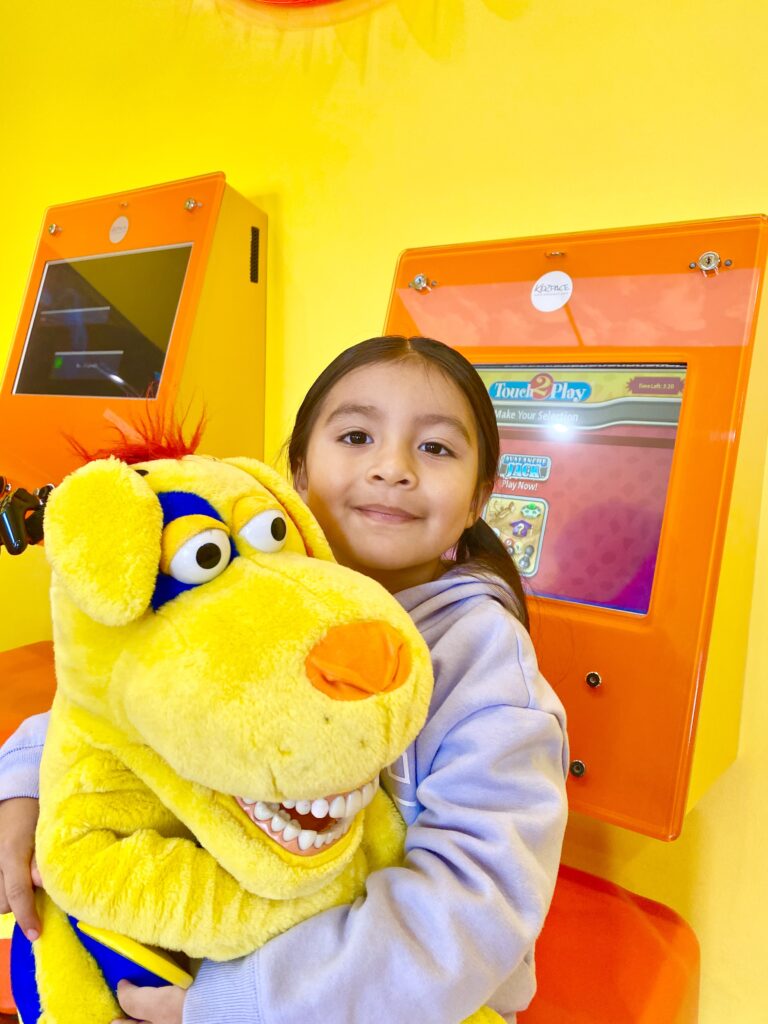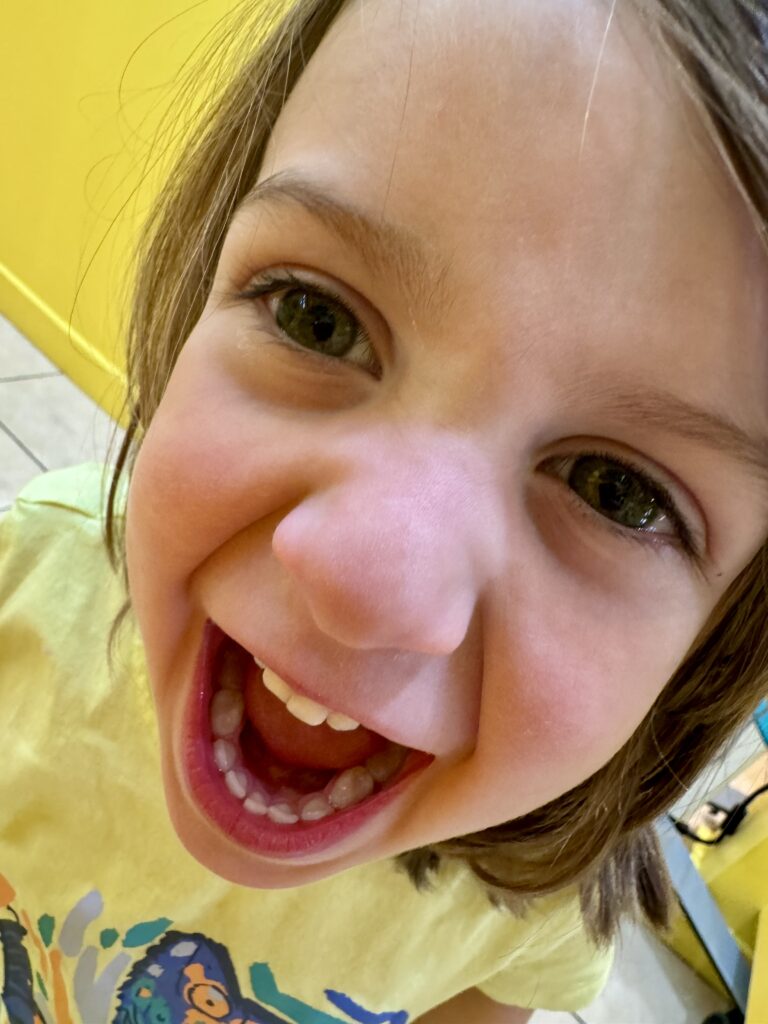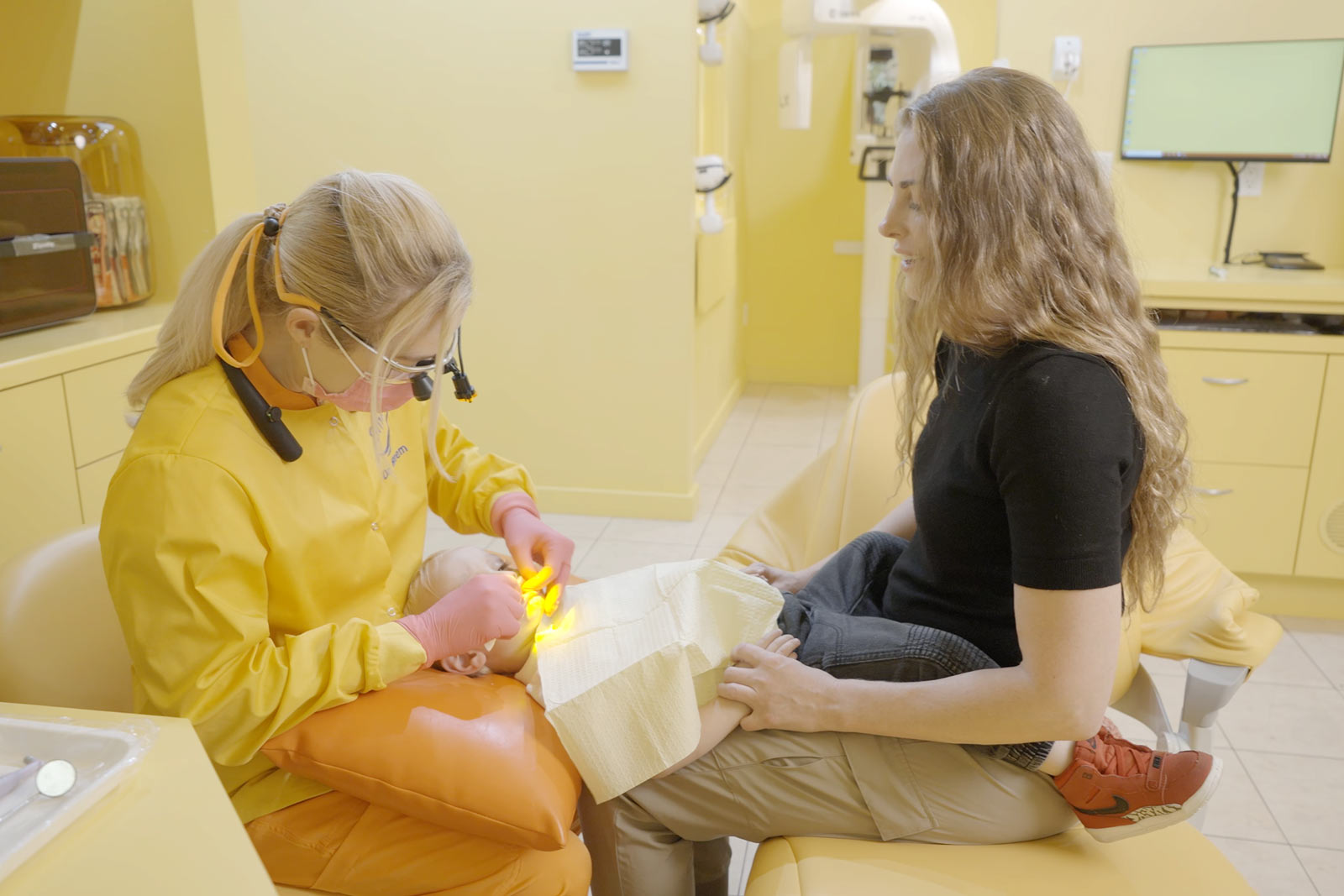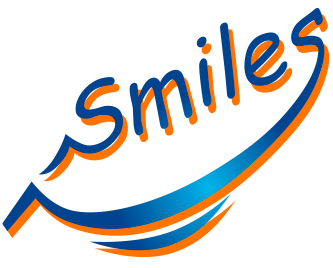A pediatric dentist’s expert perspective:
As a pediatric dentist, I feel privileged and honored to play a part in building lifelong oral health foundations for the children visiting our office, Smiles Pediatric Dentistry & Orthodontics in West Los Angeles. Helping parents understand WHY it is important to promote oral and dental health for their babies and toddlers is a calling my team and I truly take to heart. Infant and toddler oral care visits are the perfect opportunity to cultivate dental wellness and to begin establishing child comfort and well-being in the pediatric dental setting.

Why Early Dental Care Matters:
The “WHY” concept, is attributed to Simon Sinek who popularized it through his “Golden Circle” model, where “WHY” represents the core purpose or belief driving an individual or organization. So what is the “WHY” in calling for early infant and toddler dental visits? The answer is fostering a lifetime of dental health, joy and comfort. Baby teeth don’t typically last a lifetime but they serve as the bases for lifelong oral health. Establishing good infant and toddler oral care habits prevents cavities, ensures proper speech development, and maintains space for future permanent or adult teeth.
When Should Your Baby See a Dentist?
The American Academy of Pediatric Dentistry (AAPD) recommends scheduling your child’s first dental visit by their first birthday or when the first tooth appears—whichever comes first. This early visit allows us to detect any issues and guide you on best practices for at-home care.
How is a baby or toddler seen in the dental office?
Parents often wonder how a baby or a toddler could be seen for a dental visit. Maybe they remember their own childhood dental memories and have thoughts about how they can cultivate a positive experience for their own children.
Rest assured, babies and toddlers don’t need to be fully cooperative to go through a dental examination. They can easily be examined while on their parent’s lap in a knee to knee position; where the parent gets a good view of their baby’s mouth and can help soothe them during the visit.
At-Home Infant & Toddler Oral Care Tips
Oral care can be easily and joyfully implemented at home. Here are some tips for baby and toddler oral hygiene:
- Make sure you and your baby or toddler are comfortable: Use a changing table, a bed or sofa to position your child on their back. This will allow parents to see their baby’s mouth much better and will create a stable surface for your little one’s head. A second parent, adult or older sibling can help play with the baby’s hands and keep them occupied if needed. This will give better control to the parent who is gently brushing.
- Even before teeth emerge, gently wipe your baby’s gums with a damp cloth after feedings. Once teeth erupt, switch to a small, soft-bristled toothbrush. Best toothbrushes for babies are small, soft bristled ones like oral-B stages toothbrushes.
- For toothpaste, use a tiny smear (grain of rice size) of safe-to-swallow, toddler’s toothpaste. Toddler toothpastes from Tom’s and Jack N’Jill come in a variety of flavors and make brushing time.
- It is normal for babies to express emotions, fuss or move. Just like changing a diaper, gentle, consistent and calm practice will help them transition into a smooth routine of oral care.
- Babies thrive on schedules and rhythms. Pairing bath time with oral health time is great. This will mean that your baby goes to bed with a clean mouth promoting health and safety for those newly erupted teeth.
The Truth About Baby Bottle Tooth Decay:
Frequent exposure to sugary liquids like milk, formula, and juice can cause early childhood cavities (also called baby bottle decay). To prevent this:
- Never put your baby to sleep with a bottle of anything other than water.
- Start getting your baby used to a cup around age one.
- Limit juice intake. Even water-diluted juices sipped for long periods of time can cause enamel breakdown. Water is best!
Pacifiers and Thumb sucking:
Sucking is a natural reflex that promotes soothing. Pressure on the roof of the mouth or the palate creates a sensation of comfort that infants enjoy. When we remember that babies suck their thumbs and digits in utero, we can understand how fascinated they can be with sucking in the first few moths of life. Pacifiers, although introduced by parents, can also promote this feeling of comfort.
Sucking also reduces ear pressure, congestion and stimulates oral muscles. It is definitely easier to help a little one ween from a pacifier than it is to convince them to stop sucking their finger or thumb. However, most children naturally reduce digit sucking around the age of 3-5 years.
Expert tips on weening your baby from a pacifier:
Because there is an emotional and physical attachment to a pacifier, a gradual and gentle approach is kinder on your baby and the family. Here are some tips on how to ween your baby or toddler from a pacifier:
- Reduce the number of pacifiers to one or two.
- Use pointed scissors to poke a hole in the tip of the pacifier. This will make the nipple collapse taking up less space in your baby’s mouth.
- Next, progressively snip the tip of the pacifier over a period of several days to slowly but surly reduce it to a small nub.
- Your baby will naturally be less interested in the pacifier as the nipple reduces in size but they will still have it there for emotional support.
- Eventually, you can discard the pacifier.
Expert tips on weening your toddler from thumb or finger sucking:
Most toddlers will reduce finger or thumb sucking by the time they are in preschool. This naturally happens as they gain more digit skills and use their hands during the day to play, color and explore. Sucking during naps and night time sleeping will persist a little longer but will usually follow by Kindergarten. Here are some thoughts to keep in mind:
- As toddlers mature, they want to feel grown up and quickly understand that older kids don’t usually have their fingers in their mouths.
- Bitter nail polish and thumb braces of many designs are available online but positive reinforcement and keeping hands busy is the gentle approach that we recommend.
- Night time reading and cuddling can help your child fall asleep without sucking. Have them turn pages!
- Early orthodontics is a more comprehensive approach to a healthy and functional bite than an oral habit appliance that may be challenging and unnecessary.

Teething Time:
Teething is a natural and physiological process of growth. While it is accompanied by oral sensations, it does not typically make a baby or toddler sick. Babies and toddlers use their mouths to explore the world in the first year or two of life. This oral exploration exposes them to viruses, germs and bacteria that will help to strengthen their immune systems but can also translate to fevers, colds and coughs.
Symptoms like these are often linked to teething because it is occurring at the same time. Certainly, the emergence of teeth can cause a baby to drool, rub their gums and be curious to what is happening in their mouth. Here are some tips to help you boost your baby’s comfort during teething:
- Offer chilled (not frozen) teething rings or oral wipes
- Give your baby a clean, cool washcloth to chew on
- Gently massage your baby’s gums
- Avoid numbing gels with benzocaine, as they can be unsafe for infants.
Common Questions from Parents:
Q: When should I start flossing my child’s teeth?
Once any two teeth touch, it’s time to floss! This will usually happen between the two middle front teeth once they fully emerge on both arches. We like a nice thick floss like Cocolab
Q: Should I worry if my child’s teeth come in late?
Every child develops at their own pace. Some babies get their first tooth at four months, while others don’t until after their first birthday.
Q: I had a lot of cavities as a child, how can I prevent this from happening to my baby?
Start with keeping your own dental health in check and early infant/toddler dental visits for your baby. New beginning are always the best! With a sound understanding of how to promote dental well-being, you can certainly help your little one enjoy dental health early on.
Q: My baby was born with teeth. What are these?
When a baby is born with teeth, these are referred to as natal teeth. They are usually an early expression of the two lower front incisors due to superficial positioning during their formation. These teeth tend to be mobile and can pose challenges to breast-feeding. We try to maintain them when possible or can offer simple solutions like smoothing them gently to help soften sharp edges.
Good oral care in infancy and toddlerhood leads to strong, healthy teeth in the future. If your little one hasn’t had their first checkup yet, we’d love to welcome you to our practice!
Schedule your child’s first dental visit today! Contact us here.


